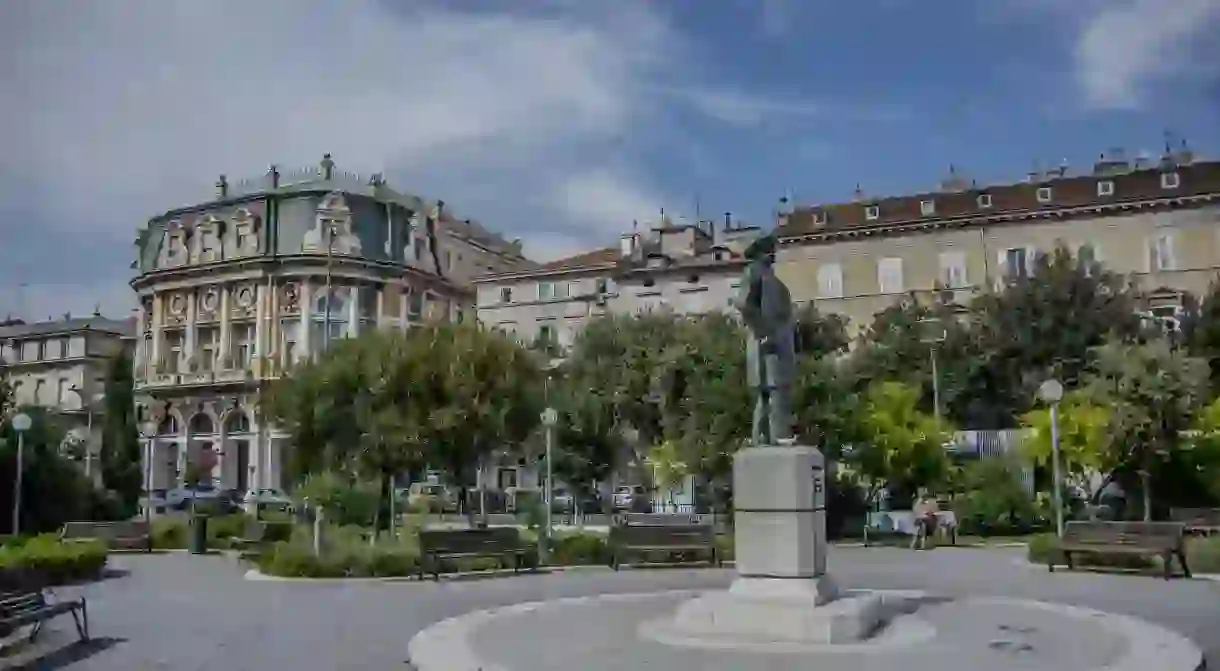How To Spend 48 Hours in Rijeka, Croatia

A lively port city, Rijeka is more than just a departure point for Croatia’s islands by long, overnight ferry. The scene of the country’s wildest carnival, Rijeka has a fascinating history, fine dining and busy bars, its centre backdropped by pretty Habsburg façades.
Day 1: Morning
Building
Start the day by getting your bearings with a stroll along the Korzo, Rijeka’s pedestrianised main drag. Running close to the waterfront, it offers glimpses of the Adriatic as you pick out one from the many terrace cafés to relax in. Landmarks include the City Clock Tower and the Radio Rijeka building. The city’s main sights and museums are within reasonably close reach.
Day 1: Afternoon
The prime site, and certainly the one commanding the best view, is Trsat Castle. Accessed via a long, steep staircase from Titov trg, Trsat was separated from the city below until after World War II. What you find here today is the stately mausoleum of General Laval Nugent, honoured with the conversion of the original Trsat Castle after liberating this region from Napoleon. As a vantage point, it’s unbeatable, hence the terrace café and al fresco concerts in the summer.
Day 1: Evening
There are plenty of options for dinner but for an original location, you can’t do better than the Botel Marina, where a classic Croatian kitchen operates on the third deck. Moored in Rijeka harbour, it provides the perfect view of all the comings and goings on- and off-shore, as well as the perfect squid stuffed with Swiss chard and prosciutto. One deck above, the bar is also handy for an after-dinner digestif.
Day 2: Morning
Museum
It’s time for a little history lesson, and Rijeka’s is more convoluted than most. The stately Governor’s Palace provides the perfect example. Built by the Hungarians when they were in charge, occupied by Italian revolutionary Gabriele d’Annunzio after World War I and then commandeered by Mussolini, the Governor’s Palace now provides a home for the Maritime & History Museum of the Croatian Coast and Rijeka City Museum, where the visitor can find out about how the Hungarians used Rijeka as a gateway to the Adriatic.
Day 2: Afternoon
Church
One of the sights the first-time visitor cannot fail to notice, particularly if they are coming in by bus, is the strange striped Capuchin Church that overlooks the concourse of the bus station. Its unusual structure, a neo-Gothic exterior fronted by a pair of matching staircases that rise up either side of it, is partly due to the fact that funding for this construction was continually running low, and designs had to be altered. In the end, it needed 20 years to build, by which time Rijeka had changed hands either side of World War I.
Day 2: Evening
While a night at a Croatian theatre may not appeal to most non-speakers of the local language, Rijeka’s Croatian National Theatre also stages ballet and opera. Plus, of course, it’s an architectural highlight, created by the architects responsible for Zagreb’s national theatre, Helmer and Fellner. Among the craftsmen who worked on the interior in the 1880s were the brothers Gustav and Ernst Klimt.













